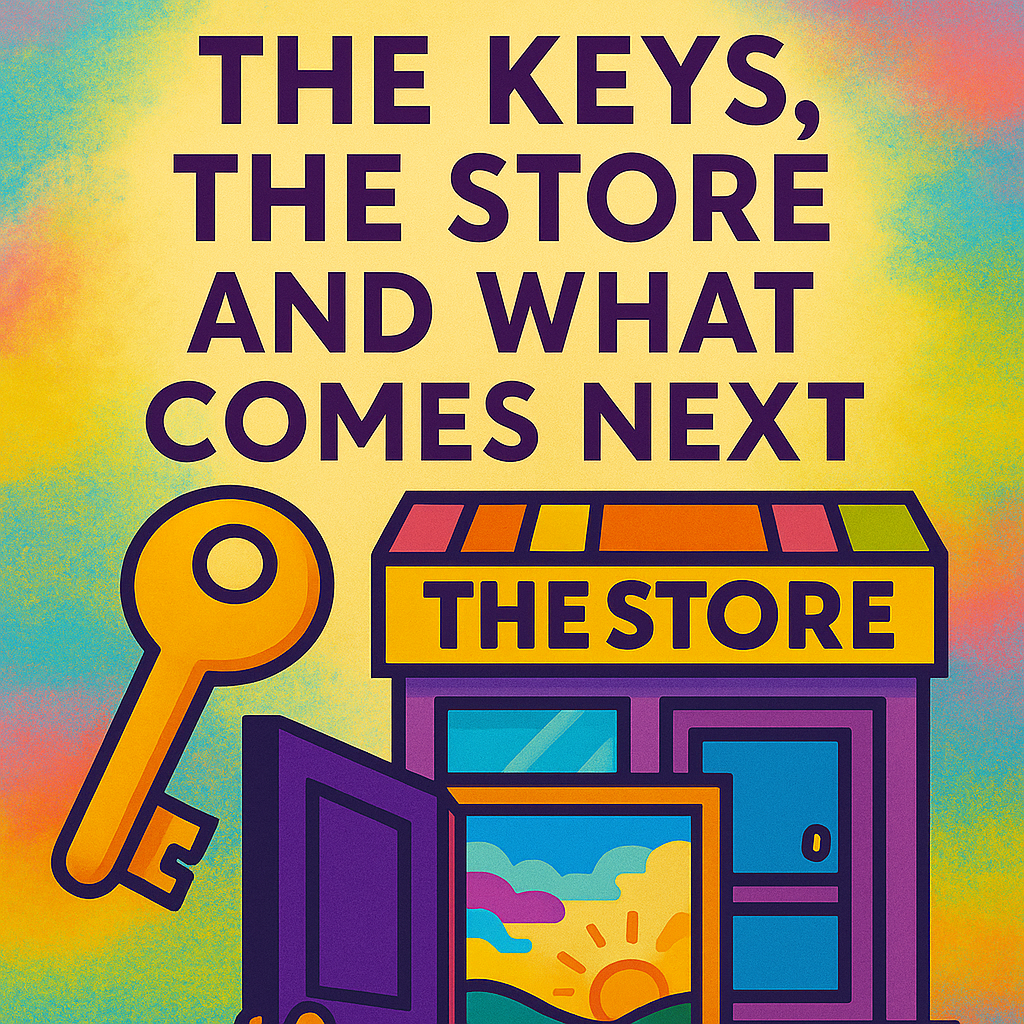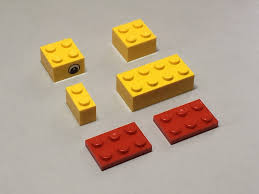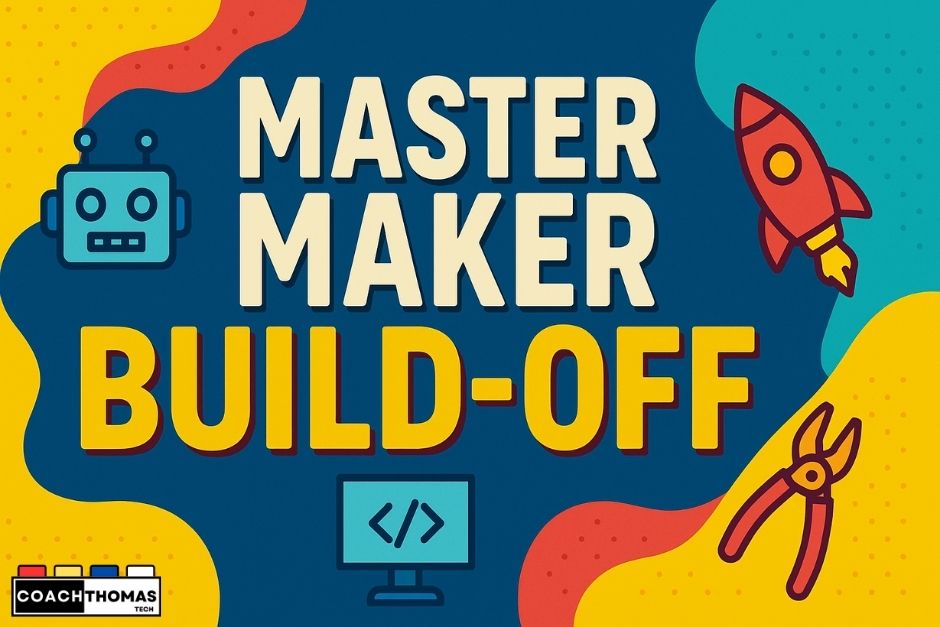Over the past few weeks, we’ve explored how curiosity sparks learning, how ditching grades opens the door to real growth, and how mastery is built through meaningful motion. But there’s one element that ties all this together: play.
Not the kind of play reserved for after the “real work” is done—but the kind that is the real work. Play that’s hands-on, joyful, and rich with purpose.
Curiosity is the spark that sets play in motion. It begins with a simple “What if?” and comes to life through exploration, building, and tinkering.
When you pair that spark with freedom from performance pressure, play becomes even more powerful. Ditching traditional grades doesn’t lower expectations, it liberates students to take risks and fail forward.
And mastery? It’s deepened through play. Iterating, testing, and engaging with concepts in real, relevant, and playful ways, that’s how true understanding sticks.
These three components—curiosity, freedom, and mastery—are not side effects of play. They’re what it’s designed to cultivate.
So why do we keep trying to fix learning with the very methods that made students disengage in the first place?
The Wrong Road to Recovery
In our still evolving, post-pandemic world, we are still feeling the effects of what experts are calling “learning loss.” I agree that there is some academic learning loss that occurred during this time, but there was also a growth of resiliency and perseverance that developed as well. But traditional education has been addressing this issue insufficiently. Schools have resorted to old-school means that lack joy, play and real engagement.
Most districts that I have seen focused on:
- Extended seat time: this includes longer days or years, summer school
- Extra tutoring: after school time dedicated to endless math and reading drill and kill
- Remediation Focused Curriculum: taking student out of the so-called “fun” classes for more math, reading, study skills, etc.
- Benchmark Testing: use of academic intervention services such as i-Ready to document growth and learning.
According to the Learning Policy Institute, “States and districts invested more the $100 billion in ESSER funds, much of it toward tutoring, staffing and academic intervention programs.”
I am not saying that this missed the mark. Districts have acknowledged the urgency of this situation by addressing the issue. They have aimed to close the academic gaps that have arisen post-COVID. They have provided short-term accountability for the funding that they use. But the problem is that they are focused on coverage of content, not connection to learning.
But focusing only on academic intervention tells only a part of the story. In the rush to cover content and check off boxes, something essential was left out – what actually makes the students want to learn.
In addressing these needs, there are gaps that they miss:
- Social-emotional: students are more disengaged than ever before
- Motivation: today’s students are motivated by learning that has meaning, not by compliance
- Creativity & Autonomy: there is little space for a student to explore and be creative with the content
- Teacher Burnout: too much reliance on scripted solutions and less trust in teacher expertise
🧱 “Children who engage in play-based learning demonstrate better outcomes in literacy, numeracy, and social development.” — LEGO Foundation, “Learning Through Play” Report
In our rush to catch students up, educational leaders failed to consider whether the road we are on leads to the learning that we want. All these strategies and guidance don’t matter if the students don’t want to come along for the ride.
Play: Where Rigor Meets Joy
Play is what makes the learning journey fun and engaging. It is an often-misunderstood concept in schools. It has become a four-letter word in education. But play is a powerful, practical and remarkable tool for learning and learning recovery.
Most teachers associate the word play with games, goofing off, or something that you do at recess. Play is so much more than that. The play that I am talking about is structured, joyful and creative.
Structured play has meaning and purpose. It has iterations. I am not talking about free time, but rather a challenged based exploration where students test ideas and find what works. This is what learning should look like.
This type of student-driven exploration builds (5) key competencies that are difficult to explicitly teach on their own.
- Critical Thinking: problem-solving through design and experimentation
- Collaboration: working in teams to build, troubleshoot, reflect
- Resilience: sticking with a challenge after failure
- Self-Regulation: managing time, frustration, and creative focus
- Communication: explaining builds, sharing ideas, making meaning
If you want to build lifelong skills that transfer outside the classroom walls, then look no further than a pile of LEGO bricks (or any other crafting supply). When our students play, they are developing more than just what is being taught. They are building durable skills.
One of my favorite recent projects is the Automated Candy Dispenser Challenge. In this activity, students are tasked with designing, building, and automating a device that delivers a single serving of candy (or a stand-in item). The build must function reliably—dispensing just one unit per activation—and can use basic supplies like cardboard, LEGO bricks, tape, sensors, motors, or even gravity-based mechanics depending on the constraints we choose.
Here’s why this project works so well:
It’s open-ended.
It’s hands-on.
And it’s play with purpose.
Students dive into the challenge with curiosity, often testing wild ideas right out of the gate. They sketch, prototype, troubleshoot, and iterate as they go—learning about mechanical design, problem-solving, and sometimes even basic coding or automation through tools like Hummingbird Kits. Along the way, they’re forced to collaborate, adapt when designs fail, and communicate their thinking to peers and to me.
What makes this playful learning instead of just another STEM task is the mindset shift. Students are exploring and enjoying the process. They laugh when something flops. They high-five when something finally works. And when we bring it back together for reflection, they own what they learned.
That’s where ABC/CBV comes in:
- Activity Before Content: Students engage in building before we deliver formal instruction.
- Content Before Vocabulary: They experience the concepts (friction, force, inputs/outputs, or flow control) before we label them.
This creates a mental anchor for deeper understanding. Now when I introduce the term “iteration,” they can connect it to the third time they redesigned a jammed chute.
This isn’t just about candy. It’s about confidence, creativity, and critical thinking, all wrapped up in a joyful, engaging experience students actually remember.
Playful learning is sticky learning. When students get their hands dirty with a project, they remember the learning because they lived it.
Real Rigor Is Built, Not Assigned
So, if play is this powerful, why is it still seen as the opposite of rigor?
We need to rethink the traditional model of education. Moving away from the idea that more worksheets, memorization and test prep is the way to add academic intensity. There still is a place for these things in school, but there needs to be room for more. Because when was the last time that you learned anything meaningful from a test or worksheet?
If the goal is deep, lasting learning—not just short-term performance, then we need methods that reflect that reality. Something that requires designing, iterating, and reflecting. Skills that reflect what happens outside the classroom. Play is not a break from learning, it is where meaning is made.
Learning through creation brings higher cognitive load in a low stress environment. This helps to reduce anxiety around test scores, grades, and playing the game of school. It makes it ideal for sticky learning. It is low floor – high ceiling. Scaffolding of the learning to meet the needs of all students is easier and more robust in this type of environment.
Here are a few examples that highlight the importance and purpose of play:
“Playful learning experiences challenge children to plan, adapt, and reflect—requiring more executive function than passive tasks like worksheet completion.”
— LEGO Foundation, Five Characteristics of Learning Through Play
“Rigor is not about giving harder worksheets. It’s about creating conditions where students can think deeply, struggle productively, and make meaning.”
— Dr. Robyn Jackson, author of “How to Plan Rigorous Instruction”
“Students remember what they do far better than what they are told.”
— Edutopia, “Why Students Remember What They Build”
“Play-based instruction not only improves academic outcomes in literacy and math, but also enhances social competence and motivation to learn.”
— The American Academy of Pediatrics, 2018 Policy Statement on the Power of Play
Start Small. Think Big. Play Boldly.
You don’t need LEGO bricks, cardboard or a 3D printer to bring play back into your classroom. You need to start. To start simple. Start with what you know. Start with what you have. There is no need to reinvent the wheel. You are doing awesome things, just make them more fun.
Here are a few simple, practical ways to incorporate it tomorrow:
- Vocabulary Build (ELA or Science): Students build a model or visual metaphor of a new term using blocks, paper, or even drawings.
- Math Scavenger Hunt: Hide problems or clues around the room for students to solve collaboratively.
- Historical Build & Reflect (Social Studies): Students recreate a moment in history and explain the cause-effect relationship behind it.
- Science Challenge: Design a simple machine or model using limited supplies to demonstrate a principle like friction, gravity, or energy transfer.
You can always take a lesson plan you have and ask AI how to add something like this to it. You might be surprised at how that turns out.
Look at what you are doing. Ask yourself if there is just one spot where you could a playful approach could spark some engagement. Simple. Small. Remember, our students are kids and we need to let them be kids. Whether they are 5 or 18 (or 54 like me). We need fun and exploration.
Play connects learning to things that are meaningful. It connects our curiosity to mastery. It is not an extra, it is the foundation for growth. Rigor is increased through play because it removes barriers to growth.
You don’t need a classroom overhaul to bring play back into learning—just the courage to try something different. So here’s your challenge:
Pick one idea. Try it this week. Watch what happens.
Whether it’s a quick build, a hands-on challenge, or a playful twist on review, start small—but start bold. Because when students build, explore, and laugh together, the learning sticks.
Share your moment using #WheresTheFunInThat and tag @CoachThomasTech.
Let’s show the world that play isn’t a break from learning—it’s the bridge to everything that matters.
Disclaimer This content was originally written by the author. AI was used solely for editing, formatting, and refining the structure to enhance clarity, readability, and flow. No AI-generated content was used in the creation of ideas or original writing.



